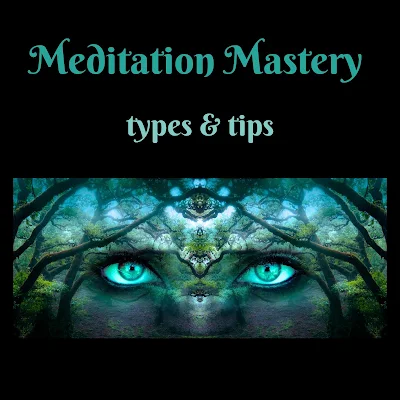Meditation Mastery - Types and Tips For You To Explore
There are several types of meditation, each with its own unique approach and focus. Here's an overview of some common types of meditation and guidance on how to start practicing each one:
Mindfulness Meditation
Mindfulness meditation involves bringing your attention to the present moment, observing your thoughts, sensations, and emotions without judgment. To start practicing mindfulness meditation:
- Find a quiet and comfortable space.
- Sit in a comfortable position, either on a cushion or a chair, with your back straight.
- Close your eyes or keep them gently focused on a spot in front of you.
- Direct your attention to your breath, noticing the sensations of inhalation and exhalation.
- When your mind wanders, gently bring your focus back to the breath without judgment.
- Start with short sessions, around 5-10 minutes, and gradually increase the duration as you become more comfortable.
Loving-Kindness Meditation
Loving-kindness meditation involves cultivating feelings of love, compassion, and kindness towards oneself and others. To start practicing loving-kindness meditation:
- Find a quiet and comfortable space.
- Sit in a comfortable position with your back straight.
- Close your eyes and take a few deep breaths to relax.
- Begin by directing loving-kindness towards yourself, silently repeating phrases like "May I be happy, may I be healthy, may I live with ease."
- Gradually extend the loving-kindness to loved ones, neutral people, and even difficult individuals or all beings.
- Repeat the phrases with sincerity and an open heart.
- Start with a few minutes of practice and gradually increase the duration.
Transcendental Meditation (TM)
Transcendental Meditation is a technique that involves the use of a mantra, a repeated sound or phrase, to quiet the mind and achieve a state of deep relaxation and inner peace. TM is typically taught by certified instructors, so seeking proper guidance is recommended for this practice.
Guided Visualization
Guided visualization meditation involves using mental imagery to evoke relaxation, healing, or desired outcomes. It often involves following a recorded or live guide who directs your imagination. To start practicing guided visualization:
- Find a quiet and comfortable space.
- Sit or lie down in a relaxed position.
- Close your eyes and take a few deep breaths to relax.
- Follow a guided visualization recording or a live instructor's guidance.
- Imagine yourself in a peaceful and pleasant setting or visualize positive experiences or desired outcomes.
- Engage your senses and immerse yourself in the visualization.
- Practice for a duration that feels comfortable to you.
Breath Awareness Meditation
Breath awareness meditation involves focusing your attention on the breath as an anchor for attention and cultivating a calm and centered state of mind. To start practicing breath awareness meditation:
- Find a quiet and comfortable space.
- Sit in a comfortable position with your back straight.
- Close your eyes or keep them gently focused on a spot in front of you.
- Direct your attention to your breath, observing the sensations of inhalation and exhalation.
- Notice the natural rhythm and flow of the breath without attempting to control it.
- If your mind wanders, gently bring your focus back to the breath.
- Start with short sessions, around 5-10 minutes, and gradually increase the duration.
Remember, consistency is key in meditation practice. Start with shorter sessions and gradually increase the duration as you become more comfortable. Experiment with different types of meditation and find the ones that resonate with you the most. It's also helpful to seek guidance from experienced teachers, attend meditation classes, or use meditation apps or recordings to support your practice.





